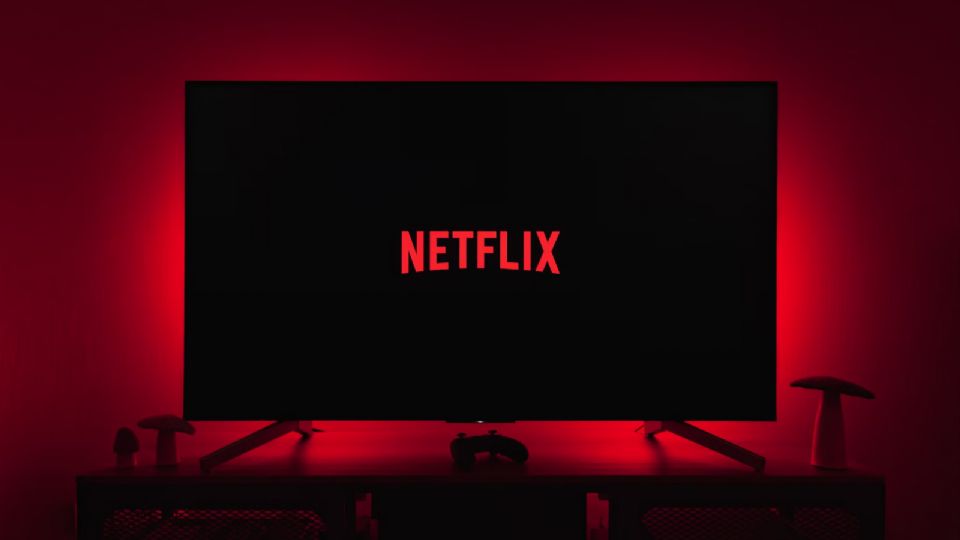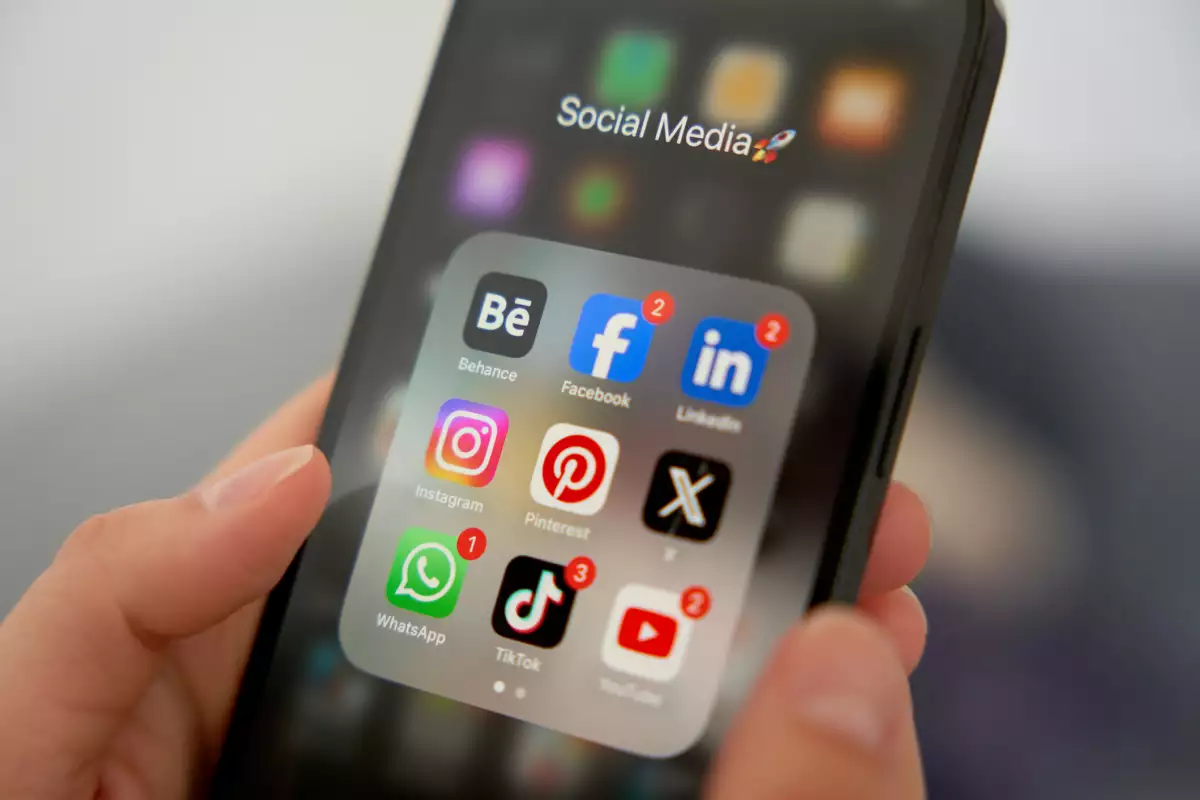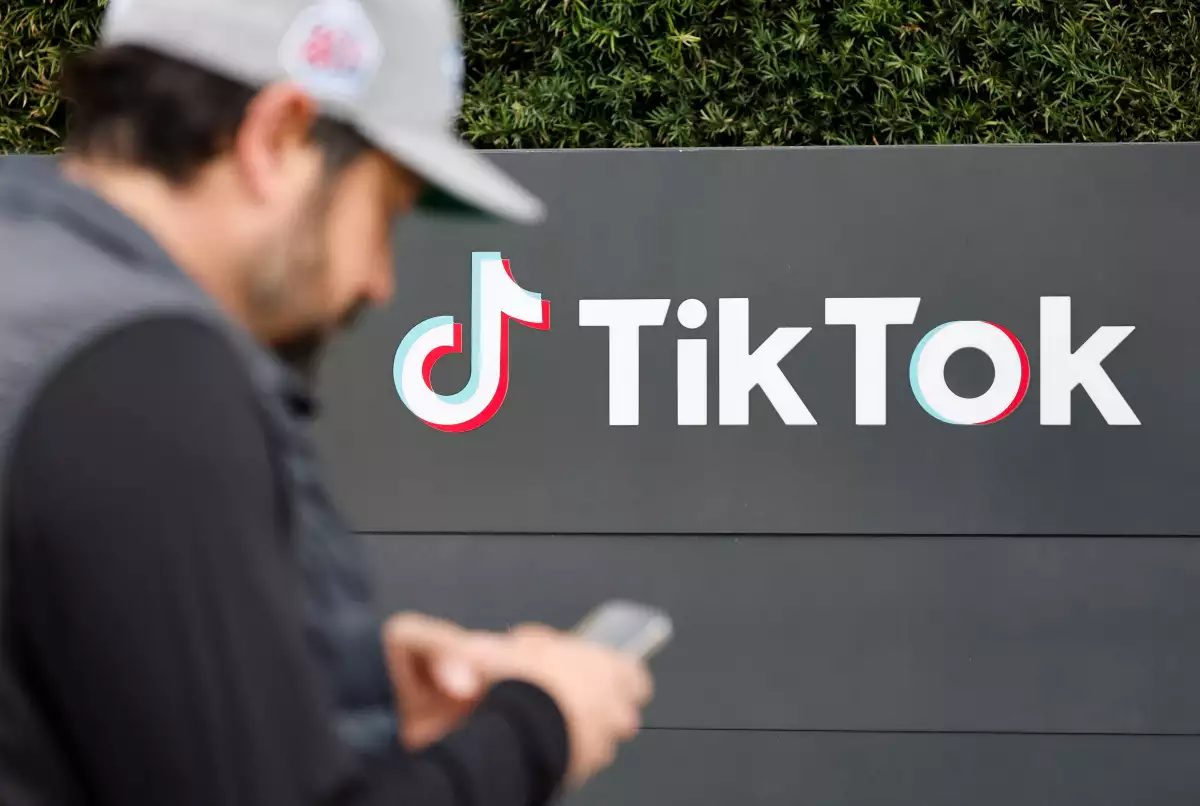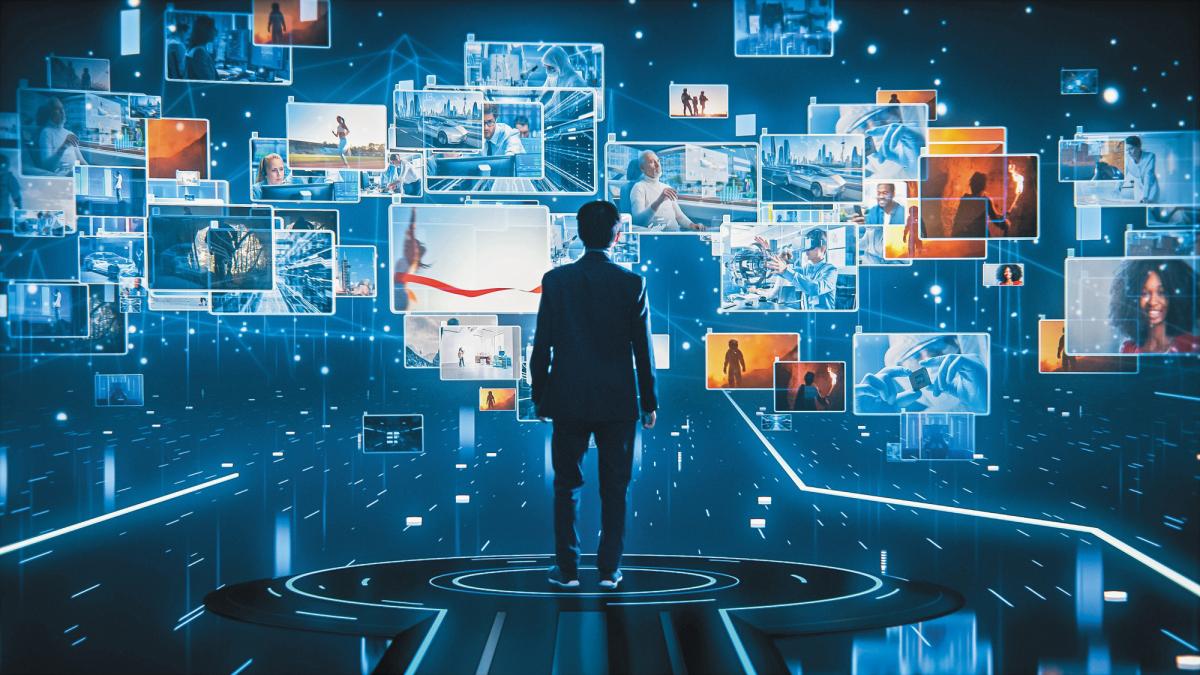
Future and trends of the entertainment and media industry in UP
Within the framework of the MBA in Entertainment and Media at the University of Palermo
During the presentation at the University of Palermo, Professor Lieberman of NYU stated that the entertainment business is constantly expanding because there is an ever-increasing production of content.
This is driving the entire entertainment industry, which today has a turnover of US$ 1,360,000,000 (one trillion, three hundred and sixty billion). According to Professor Lieberman, the media and entertainment business is based on what he calls the four C's: Content, Channel, Consumption and Convergence. "We must analyze these four pillars to understand the entire business, and how we can add value," said Lieberman.
New trends in the industry: Film and TV:
Digital Distribution, Network TV – HDTV, Flat and LCD screens. Cable: digital explosion and hundreds of channels, VOD, Internet and broadband expansion. Editorial:Electronic media, Amazon Home Video. Netflix Telecomm, Triple Play, Quadruple Play. Music: IPod, On Line. Free Downloading SportsOlympics Rights, World Cup + Technology Distribution Mobile – 3G, 4G, IPhone. Regarding the film industry, Professor Lieberman said that film production is greater outside of Hollywood. "In India, Hollywood produces more than a thousand films each year, mostly dedicated to the domestic market and Indian audiences in other countries.
Hollywood, on the other hand, produces about 600 films a year, many of them intended for the foreign market," said Lieberman. Based on this growth, Professor Lieberman said that "the Media and Entertainment industry will require professionals dedicated to the business in vital areas such as management, operations, sales and marketing who know fundamental aspects such as working with multidisciplinary teams, distribution policies and pricing strategies of the sector." He also assured that the business is based on the work of people. "Technology is a fundamental part of the media and entertainment business, but we know that there is no machine that can make a movie, write a book, or a newspaper." According to Professor Lieberman, the driver that allows the development of the entertainment and media business is the growth of content production and the diversification of information access devices, which increasingly offer more functions to people. "Today, the telephone also functions as an agenda and a music player, among many other things." In this context, the decline of newspapers and magazines was announced, but ultimately did not occur. The sale last week of the Wall Street Journal for US$ 5 billion exemplifies this, according to Lieberman.
"The printing industry feeds cable television. For example, wine and food magazines helped launch specialized channels such as El Gourmet.com," concluded Lieberman. At the end of the introductory panel, Gabriel Foglia, Dean of the Faculty of Economic Sciences at the University of Palermo, highlighted: "In this industry, consumption is constructive, that is why we speak of the Prosumer. The prosumer enhances and synergizes the contents, and they take on greater value, as demonstrated by the case of the English opera singer Paul Potts, who thanks to YouTube stopped selling cell phones and obtained a contract worth one million pounds sterling." TV, film and theatre content "If our content is of such good technical and conceptual quality that it can be exported, why do they choose foreign formats when competing in prime-time?" said Ester Feldman, one of the panelists.
Ester Feldman, from Underground; Diego Romay, from Romay Producciones, Pablo Sirven, from La Nación; Ezequiel Abramzon, from Disney and Natalia Popovsky, from the University of Palermo. The topic of this panel was dedicated to content on the different entertainment and media platforms, and the future prospects and challenges of local content production. The panel began with an introduction by Natalia Popovsky, Director of the MBA in Entertainment and Media at the University of Palermo. "We understand content to be the entertainment product itself, from the initial creative idea, its production process until the product is finished and ready to be delivered to the consumer." In this sense, Lic. Popovsky highlighted: "technology is the engine that allows the emergence of new media, which require "These are the possibilities of reusing content that can fill so many spaces, original content, or the increasingly common reuse of content adapted to another medium for which it was originally conceived. A two-hour film can provide great entertainment in a cinema, while on a cell phone it would be too long and would drain the battery." From the industry's point of view, Popovsky highlighted that the possibility of reusing content provides new distribution windows that generate greater sources of income, allowing for generating greater revenue, reaching more consumers and reducing the risk of failure. "To do this, it is key to understand intellectual property rights, which provide the framework to protect content and be able to market it," he said.
The panel continued with a presentation by Ester Feldman, from Underground, on the paradox of the hybridization of formats in the Prime Time of local open TV. During his presentation, Feldman said: “In my opinion, the current paradox of Argentine television is that, while the local television industry is economically supported on the one hand by the sale of content abroad - for example: “Muñeca Brava” is one of the best-selling and most translated soap operas in the world, “Sos mi vida” was sold to Russia, Romania, Hungary, Croatia, Bulgaria, the Czech Republic and more than ten Latin American countries, “Los Roldan” was an absolute success in Mexico and Colombia - and on the other hand it is supported by the provision of production services for different countries around the world - for example: Artear is currently providing production services for the Brazilian version of Amas de casa desesperadas. While this is happening, the prime time of the two most important networks in the country, I am obviously referring to Telefé and Artear, cover their prime time with two foreign formats:Big Brother and Singing and Dancing for a Dream.
The question would then be, if our content is of such good technical and conceptual quality as to be exported, why, when it comes to competing in the most significant segment of the grid and practically the only one that economically supports the channels by the value of their batch, do they choose foreign formats? “Let us try to give a possible answer to this question. Both are globalized programs that were broadcast successfully in other cultures. That is, both have the backing of previous success to reduce the possibility of risk. And this factor, in a deprived economy like ours, is a very important card when it comes to marketing the product. It is much easier to get large companies to invest money in the batch of a product that has a history of success than in a product that has the risk of novelty. Second point in common. Both Big Brother and Dancing / Singing for a Dream cannot be confined to a single genre. They are formats that mix game show, live show, talk show, confessional, soap opera, documentary and journalistic, through the use of interviews and reports. This mix of formats recognizable by the audience stimulates identification and the feeling of familiarity. They are hybrid formats that play with the audience's memory. They are two "new" products that emerge from the mix of already known formats.
Third point in common; both break the border between fiction and reality. More and more the particular invades the collective and more and more the thin line between fiction and reality falls to the ground, particularly when among the professional actors we find daily "ordinary" people, forming part of the "staging", says Feldman. Now, how do these foreign formats develop on the screen? Is there an Argentinization of them or is it a simple formal transposition? The success of the Venezuelan format in Argentina has more to do with the enchantment that the host Marcelo Tinelli produces in the public and with the theatricalization of the jury's vote than with the real competition between the participants of the original format. In the case of Big Brother, the Argentinization is given by the topics and by the choice of the profiles of the participants. International form, national content. That seems to be the key to the success of both formats, concluded Feldman. For his part, Diego Romay, owner of the Teatro El Nacional and Teatro Alcalá, in Madrid, Spain, analyzed the impact of local production of content on commercial theater productions. "What happened is that during the last few years the owners of the content took a good part of the box office in the theaters, so it is more convenient for us to produce our own content," said Romay.From the 2001 crisis to the beginning of the country's economic recovery, the theater business (including concerts and mass shows) increased from $40 million in 2001 to $340 million last year. “The twenty theaters in the Federal Capital had revenues of $110 million in 2006, of which $70 million is distributed among the three largest: Grand Rex, Opera and Luna Park. In this context, the remaining 17 theaters in the Federal Capital receive $2.2 million a year, on average, of which 15% goes to the owner of the content, 30% to the theater and the rest goes to advertising and fixed expenses,” analyzed Romay. As a journalist for La Nación, Pablo Sirvén offered his analysis: “The changes are increasingly accelerated. The devices have changed radically in the last five years. Today we live in a contradiction between platforms that are concentrated but offer massive access to many users, such as new bloggers,” he remarked. From a business point of view, Sirvén highlighted the passivity of some phenomena that surpass the original broadcast channel. “The success of Lost surpassed its visibility on cable, thanks to the diffusion of TV series through DVDs, whether original or copied, and even downloaded from the Internet.” The availability of content through the Internet is one of the drivers of the entertainment industry according to Ezequiel Abramzon, from Disney. The company, present in 36 industries such as films, theme parks, zoos, merchandising and character licensing, among other businesses, has its own vision on the role of its audience in the purchase of entertainment technologies.
“Today it is the kids who ask their parents to change their PCs for more powerful ones that allow them to play, access the Internet and communicate with their friends. The same thing happens with game consoles, and in some cases, they also motivate the purchase of cell phones with multimedia capabilities because they use the features they offer to communicate with more resources,” Abramzon considered. Regarding consumer trends, he said the following: “The consumer is clearly becoming a prosumer, who also lives in virtual worlds, does business in them, and plays with others in a community. Therefore, we have to produce content on multiple platforms,” Abramzon reflected.As a journalist for La Nación, Pablo Sirvén offered his analysis: “The changes are increasingly accelerated. Devices have changed radically in the last five years. Today we live in a contradiction between platforms that are concentrated but offer massive access to many users, such as new bloggers,” he remarked. From a business point of view, Sirvén highlighted the passivity of some phenomena that surpass the original broadcast channel. “The success of Lost surpassed its visibility on cable, thanks to the diffusion of TV series through DVDs, whether original or copied, and even downloaded from the Internet.” The availability of content through the Internet is one of the drivers of the entertainment industry according to Ezequiel Abramzon, from Disney. The company, present in 36 industries such as films, theme parks, zoos, merchandising and character licensing, among other businesses, has its own vision on the role of its audience in the purchase of entertainment technologies. “Today, it is the kids who ask their parents to change their PCs for more powerful ones that allow them to play, access the Internet and communicate with their friends. The same happens with game consoles, and in some cases, they also motivate the purchase of cell phones with multimedia capabilities because they use the features they offer to communicate with more resources,” Abramzon said. Regarding consumer trends, he said the following: “The consumer is clearly becoming a prosumer, who also lives in virtual worlds, does business in them, and plays with others in a community. Therefore, we have to produce content on multiple platforms,” Abramzon reflected.As a journalist for La Nación, Pablo Sirvén offered his analysis: “The changes are increasingly accelerated. Devices have changed radically in the last five years. Today we live in a contradiction between platforms that are concentrated but offer massive access to many users, such as new bloggers,” he remarked. From a business point of view, Sirvén highlighted the passivity of some phenomena that surpass the original broadcast channel. “The success of Lost surpassed its visibility on cable, thanks to the diffusion of TV series through DVDs, whether original or copied, and even downloaded from the Internet.” The availability of content through the Internet is one of the drivers of the entertainment industry according to Ezequiel Abramzon, from Disney. The company, present in 36 industries such as films, theme parks, zoos, merchandising and character licensing, among other businesses, has its own vision on the role of its audience in the purchase of entertainment technologies. “Today, it is the kids who ask their parents to change their PCs for more powerful ones that allow them to play, access the Internet and communicate with their friends. The same happens with game consoles, and in some cases, they also motivate the purchase of cell phones with multimedia capabilities because they use the features they offer to communicate with more resources,” Abramzon said. Regarding consumer trends, he said the following: “The consumer is clearly becoming a prosumer, who also lives in virtual worlds, does business in them, and plays with others in a community. Therefore, we have to produce content on multiple platforms,” Abramzon reflected.and in some cases, they also motivate the acquisition of cell phones with multimedia capabilities because they use the features they offer to communicate with more resources,” Abramzon considered. Regarding consumer trends, he said the following: “The consumer is clearly becoming a prosumer, who also lives in virtual worlds, does business in them, and plays with others in a community. Therefore, we have to produce content on multiple platforms,” Abramzon reflected.and in some cases, they also motivate the acquisition of cell phones with multimedia capabilities because they use the features they offer to communicate with more resources,” Abramzon considered. Regarding consumer trends, he said the following: “The consumer is clearly becoming a prosumer, who also lives in virtual worlds, does business in them, and plays with others in a community.
Therefore, we have to produce content on multiple platforms,” Abramzon reflected. Panel: Cable Simone Battiferri, Director of Fixed Residential Telephony and SMEs at Telecom; Luis Valle, Director of the Digital TV Postgraduate Program at the University of Palermo; and Adrián Herzcovich, Vice President and General Manager for the Southern Cone at Fox Latin America Channels, participated in the panel. The panel was dedicated to the challenges that the cable industry will face with the advent of Digital TV. The panelists highlighted the emerging nature of new information technologies and debated the role that cable and telephone companies will have in the face of convergence. In his opening presentation, Simon Battiferri, from Telecom, analyzed the content business from the perspective of the value it has for users. “Fifteen years ago, a customer paid a certain amount of money to acquire a long play. When the cassette revolution came, there was piracy, but its value remained similar. The same thing happened with the massification of the CD and its possibility of home recording. However, for a teenager today, an MP3 song has a monetary value equal to zero,” said Battiferri. Regarding his future perspective, the executive assured that the challenge for telephone companies is to become an integral communications provider. “It is the market that dictates where telephone companies will move in the future, either by offering platforms for access to content or by participating in its production,” he summarized. Luis Valle, Director of the Digital TV postgraduate program at the University of Palermo, highlighted that the process of modernization of TV is taking place after the years of the crisis, which forced the media and the local content production industry to modernize their technological platforms in an accelerated manner. “In this way, the gap that arose in the years of the crisis will be compensated, but in a hasty manner, which in turn requires shorter terms to amortize the investments,” he said. For Valle, the development of digital TV will be determined by the influence achieved by the players in this market: “cable companies, telephone companies, and electricity companies, which have the technological capacity to offer communications services and have already taken legal steps in this regard,” he said. Finally, he analyzed satellite television companies, whose level of interactivity is based on Video On Demand and DVR technologies, which allow delay in broadcasting over technologies and obtain high quality in high definition TV. Adrián Herzcovich, from Fox Latin America, analyzes the cable business from a numerical perspective. As a content provider, he measures the business through market share. “The country has 40 million inhabitants, 10 million homes have TV. Of that number, about 60% have access to pay TV. Let's compare this with the 9 million landlines and 3 million cell phones.“That is the universe in which we generate our content,” he said. In the immediate future, the expected launch of digital TV in Argentina will allow the emergence of integrated content that can be accessed from different platforms including PCs and mobile devices. In fact, the increase in the number of cell phones is an important driver in its future strategy: “This product segment is open to the innovations that come, since we will have to evaluate which are the next formats that will make the mobile digital TV business grow,” he concluded. Mobile telephony and mobile TV Guillermo Rivabén, Marketing Director of Telecom Personal, participated. During the panel, the executive stated: “We see a shift from fixed to mobile. Content is moving towards mobility because there is a growing need to generate content and share it.” Rivabén analyzed the challenges and opportunities for mobile television in a context of widespread use of cell phones with video, photo and multimedia capabilities. Mobile television raises many questions for operators and content producers. In Rivabén’s view, this new way of enjoying content through mobile devices will impact the way we watch TV. “There are 3 billion cell phones, 2.5 billion TVs, 1 billion PCs with 1.2 billion Internet users in the world. In this context, mobile TV as a service that is gaining volume will impact the way we watch TV. What does the cell phone add? Mobility and immediacy. When the user asks for interactivity, he asks for it when he receives the stimulus. What it adds is the possibility of doing it everywhere at all times. As a consequence, it adds time to TV that is not so valued today, and it is the change to more hours being Prime Time. Now I don't have to get home to watch the program, or watch the news. This allows me to generate a new Prime Time for content that was not useful before. This will happen according to each culture. The mobile TV phenomenon in Korea represents 20 to 30 percent of the cell phone base. This implies that what counts is the culture of device use because there is no technological barrier, although they have cheaper access to hooters that are more expensive here. That is why I say that it is a way of experiencing content, and not a problem of gaps. What is going to happen is that we are not going to compete between classic TV and cell phone TV. I think that more TV will be watched, at new times, and with new classification categories for what is Prime Time. There is also a strong paradigm shift between what is a person-to-person call. Nowadays, chat is a form of communication, and children create communities of users. If we add to this the emergence of Internet 2.0, we see the cell phone as a device that allows content to be created for more open communities or Web 2.0 sites such as YouTube, photologs, blogs, etc. 28% of the cell phone base in Argentina has a photo. 12% allows video recording and uploading. Only 2% has streaming capacity, in quasi-broadcast format.
This is the limitation in terms of recycling time for the device that the client has. This data is from June 2007, with equipment that is 3 years old. We see that adoption is growing, guided by the format and the phenomenon of having the latest phone. From the point of view of infrastructure, today we have more transmission capacity than demand. These are networks designed to provide voice and data.To think that mobile TV is about transferring TV content to cell phones is to think about the issue in an incomplete way. This was a mistake that we made all over the world, but it was at the beginning. It failed because the quality was not right. Secondly, people accessed it when they had a time window. That window is defined by the person when they want and it stops being a problem for the programmers. The third was when episodes were transformed into motion-sodes, adapted to cell phones and ad hoc content, as in the case of Cómico Stand Up. When the cell phone is used for entertainment, be it blog or mobile TV, the boundaries become blurred. If we analyze the web 2.0 from the point of view of content, we see that there is a shift from the fixed to the mobile. There is mobile YouTube, mobile Windows Live. That is the change. Content is moving towards mobility because there is a growing need to generate content and share it.” Industry “Businesses linked to music exist and will continue to exist. They will probably not be the same businesses, and their reach will not be the same. We are facing the biggest crisis since technology allowed us to sell recorded music. But it is also an opportunity to find a new business model,” said Pablo Máspero. Participants included Camilo Kejner, President of EMI Music Sudamericana; Pablo Máspero, Director of Legal Affairs at CAPIF; Mariana Martin, Communications Manager at Telecom Personal; Ezequiel Arbusti, Digital Content Manager at VI-DA Global; and Pablo Maas, editor of iEco-Clarín and Clarín Pymes. Camilo Kejner, President of EMI Music Sudamericana: “This industry is marked by technology. From long-playing records to cell phone cards. Until 1998, when CD recorders became widespread and people began to transfer files over the Internet, no one thought it was a big deal that a friend could send a song to another friend by email. At that moment, technology and music changed direction. The music world had a hard time seeing technology as an ally. To see what the problem is, let's look at the sales figures. In 1982, Michael Jackson released Thriller, and sold 62 million records. A while ago, Norah Jones sold 20 million records. Globally, the record industry's turnover fell by 25% compared to last year. This sets a pattern: the physical medium no longer matters, what matters is the content. That's our problem, realizing that what counts is the music, no matter how it's packaged." "On the other hand, we have to analyze the composition of the business. Globally, 68% of the price of a CD is the retail markup. The reality is that in South America, the markup of the business is between 95 and 105 percent. In addition, we pay VAT, and that doesn't happen in other cultural industries. Digital sales grew by 300%. But this growth can be understood in a simple way. When we start from scratch, every increase is very high. This will stabilize until a new technology emerges. That is why we have to go to a new business model, or we will disappear. In the first years of this industry, royalties of 1 or 2% were paid worldwide. If today we do not give artists the opportunity to enter new businesses, we will not only lose businesses but also the artist.” Pablo Máspero, Director of Legal Affairs at CAPIF: “Businesses linked to music exist and will continue to exist. They will probably not be the same businesses, and their scope will not be the same. We are facing the biggest crisis since technology allows us to sell recorded music. Sales figures show that the maximum goal to reach is one third of the number of units sold.
That is why the goal is to capture the value that the recording industry helps generate or generates. Today, 90% of the income of a record producer comes from the sale of media,Of these, the majority are CDs, which also have piracy rates of around 60% in our country. If we add that downloading is so high, we think that piracy is at 81%. This means that the scheme is destined to change because the industry only takes 20% of the existing market.” Mariana Martin, Communications Manager of Telecom Personal: “With the launch of 3G, a great diversity of information will reach the cell phone. When we set out our communication strategy, we saw that festivals (like Personal Fest) are spaces where bands become known. As we are the organizers, we are faced with an opportunity to generate personalized content for users. The advantage we have is the 10 million users to whom we can offer the music they want to listen to. In Europe there is a company that already has its own record label. Today we know the ringtone, perhaps a band could decide to promote itself, allowing the download of the same to be produced for free, trying in this way to reach the greatest number of “listeners” possible. Before, bands started in neighborhood clubs, today this process happens at festivals, which is why we think that WAP (Wireless Application Protocol) is a space where bands can perform. This is a business that needs to be created. But everything is still to be put together and there are no models to follow.” Ezequiel Arbusti, Digital Content Manager VI-DA Global (Portal 10musica.com): “We are thinking about what the new models are for selling content. Based on experiences in other countries and companies, such as i-Tunes, which has signed agreements with each label through which they establish sustainable business rules. What is being discussed is how sustainable it will be in terms of timing and market arrival. At 10musica.com, we have a common problem with record labels, because today 600 million songs are illegally downloaded. That affects our incipient business. At a global level, i-Tunes concentrates 80% of song sales in digital format. We have an important share, although it is true that the base is very incipient, we have high growth. In order to offer music, we are waiting for the market to mature, or for there to be regulations that allow us to have a more sustainable business model. Another part of this business are the telephone operators: fixed and mobile. I am convinced that for this business to be sustainable, the players have to reach the end customer hand in hand.” Pablo Maas, director of iEco-Clarín and Clarín Pymes: “Is it the content or the media? Is it the artist or having the channels, such as the cell phones available today, that counts? Not only do we have this problem, but we must also see the advantage that the record companies have over the telephone companies. The issue of piracy causes the market to fail,“Because the market cannot restrict access to a cultural good. It is like those who want to charge admission to a fireworks show. That is impossible. When radio was launched, business models had to be created. And there were two models. In Europe it was a public service and in the United States it was carried out by advertising in the market.
There is a shift and competitors change: the record companies versus the telephone companies is an example. What is at stake then is that each industry can find its own business model, just as radio did before and then television and cinema with home video.” Publishing industry Claudio Jacquelin, Secretary of General Information for Diario La Nación, Daniel Ripoll, Secretary of the Association of Magazine Editors, and Antonio Ambrosini, Professor of the MBA in Entertainment and Media at UP, participated. “Print media are being redefined by the Internet and the opening of access to information from multiple devices,” agreed the panelists. The business environment for newspapers and magazines is being redefined by the Internet. The minute-by-minute availability of news from various sources, the availability of online videos, and reader participation are radically changing reading habits. For Claudio Jacquelin, Secretary of General Information for Diario La Nación, this trend means that new media and traditional media now compete for audiences and advertising. “With the Internet, we are all on the same level, and it is necessary to know this in order to begin to discuss the paradigm shift in managing content, to offer content when the user requires it,” said Jacquelin. Under the previous paradigm, the media decided when the audience would watch a TV show. Today, that has changed with broadcast technologies, which allow downloading episodes available on the Web, or interviews, which is why the media are getting on the same level, with the resources of the Internet. “I have never experienced such an exciting time. Five years ago, Bill Gates said that there would be no more newspapers. It didn’t happen, but I think the medium is going to change. Today we go to the newspaper websites and the news is free and direct. Before, news agencies were paid to offer it to readers. A few years ago, the Internet editorial team was separate from the paper editorial team. Today, 90 percent of the audience goes through the Internet but only 10% of the income is paid on the Internet, and 90% of the resources are in the paper editorial team,” Jacquelin described. According to Jacquelin’s vision, the future of newspapers will be to migrate to the news agency model: working 7x24. “There are no more closing hours. We realize that there is no closing minute. And operating systems and publishers are still slow to offer information. On sites open to communities, the reception of information happens more quickly than the publication.” The paradigm shift began in the 1990s, when newspapers and magazines began their processes of redesign and technological migration to computerized platforms. “The editor had to think that the story is not just textual. The new idea is that journalists think of new ways to develop content, also thinking like editors in photography and multimedia. And now that readers have their blogs, and behave like prosumers, their power increases. In the era of the blog,People are fascinated by knowing what other readers think and what they think. And what readers think has never been so important,” he concluded. In the view of Daniel Ripoll, Secretary of the Association of Magazine Editors, the paradigm shift is taking a foreseeable amount of time, taking into account that the medium is still dominated by “analogue beings” who are making their own migration to the digital. “The change that is taking place, and sometimes seems difficult to understand, is that the business numbers are going down. A few years ago, a printed medium could sell about 20 million copies a month. Today, in the best of cases, it sells about six million units. Even after many years of editorial successes like Generation X, I got out of the business of investing in paper,” commented Ripoll. On the other hand, another of the reasons that directed the reading of media on the Internet was the crisis of 2001, when the consumption habits of both the Internet and cultural goods changed. “Now the purchase of technology is recovering, but Internet access grew during periods of crisis, which shows that the Internet is here to stay. This is something I have seen since it was launched several years ago, but today it is a reality.” Regarding the development of businesses linked to print media, Ripio said the following:
“There are several paradoxes in this business. The figures we give at conferences are not real. They are used to make advertisers believe that we are what we are not. The other great paradox is that what matters least is the news. There are so many news stories that no longer have a hierarchy. In fact, there is the program “El show de la noticia,” which shows that it has lost its hierarchy in the face of humor and general interest. News programs are magazines, and newspapers, with great identity problems, are increasingly becoming magazines. The daily concept no longer exists. Newspapers have every will to continue but they will not be able to continue. The true minute-by-minute newspapers are those that have the opportunity to win this battle for the audience. So, what is the opportunity for newspapers? "It's the brands. News can be found on the Internet, but the backing of a brand is what will count because people can give credit to what they say. Agencies, on the other hand, do not have a brand in the imagination of the people. And that is where the current graphic media have an opportunity," concluded Ripoll. The MBA in Entertainment and Media from the University of Palermo provides the academic framework and a solid training to meet the challenges posed by the industry. It provides knowledge and develops business management skills and management tools for the creation, implementation, marketing and distribution of entertainment products and services.Secretary of the Association of Magazine Editors, the paradigm shift is taking a predictable amount of time, taking into account that the medium is still dominated by “analogue beings” who are making their own migration to the digital. “The change that is taking place, and sometimes seems difficult to understand, is that the business numbers are going down. A few years ago, a printed medium could sell about 20 million copies a month. Today, in the best of cases, it sells about six million units. Even after many years of editorial successes like Generation X, I got out of the business of investing in paper,” commented Ripoll. On the other hand, another of the reasons that directed the reading of media on the Internet was the crisis of 2001, when the consumption habits of both the Internet and cultural goods changed. “Now the purchase of technology is recovering, but access to the Internet grew during periods of crisis, which shows that the Internet is here to stay. This is something I have seen since it was launched several years ago, but today it is a reality.” Regarding the development of businesses linked to print media, Ripio pointed out the following: “There are several paradoxes in this business. The figures we give at conferences are not real. They are used to make advertisers believe that we are what we are not. The other great paradox is that what matters least is the news. There are so many news stories that no longer have a hierarchy. In fact, there is the program “El show de la noticia” (The News Show), which shows that it has lost its hierarchy in the face of humor and general interest. News programs are magazines, and newspapers, with great identity problems, are increasingly magazines. The concept of a daily newspaper no longer exists. Newspapers have every will to continue, but they will not be able to continue. The real minute-by-minute newspapers are those that have the opportunity to win this battle for the audience. So, what is the opportunity for newspapers? It is the brands. News can be found on the Internet, but the backing of a brand is what will count because people can give credit to what they say. Agencies, on the other hand, do not have a brand in the imagination of the people. And that is where the current graphic media have an opportunity,” concluded Ripoll. The MBA in Entertainment and Media from the University of Palermo provides the academic framework and solid training to meet the challenges posed by the industry. It provides knowledge and develops business management skills and management tools for the creation, implementation, marketing and distribution of entertainment products and services.Secretary of the Association of Magazine Editors, the paradigm shift is taking a predictable amount of time, taking into account that the medium is still dominated by “analogue beings” who are making their own migration to the digital. “The change that is taking place, and sometimes seems difficult to understand, is that the business numbers are going down. A few years ago, a printed medium could sell about 20 million copies a month. Today, in the best of cases, it sells about six million units. Even after many years of editorial successes like Generation X, I got out of the business of investing in paper,” commented Ripoll. On the other hand, another of the reasons that directed the reading of media on the Internet was the crisis of 2001, when the consumption habits of both the Internet and cultural goods changed.
“Now the purchase of technology is recovering, but access to the Internet grew during periods of crisis, which shows that the Internet is here to stay. This is something I have seen since it was launched several years ago, but today it is a reality.” Regarding the development of businesses linked to print media, Ripio pointed out the following: “There are several paradoxes in this business. The figures we give at conferences are not real. They are used to make advertisers believe that we are what we are not. The other great paradox is that what matters least is the news. There are so many news stories that no longer have a hierarchy. In fact, there is the program “El show de la noticia” (The News Show), which shows that it has lost its hierarchy in the face of humor and general interest. News programs are magazines, and newspapers, with great identity problems, are increasingly magazines. The concept of a daily newspaper no longer exists. Newspapers have every will to continue, but they will not be able to continue. The real minute-by-minute newspapers are those that have the opportunity to win this battle for the audience. So, what is the opportunity for newspapers? It is the brands. News can be found on the Internet, but the backing of a brand is what will count because people can give credit to what they say. Agencies, on the other hand, do not have a brand in the imagination of the people. And that is where the current graphic media have an opportunity,” concluded Ripoll. The MBA in Entertainment and Media from the University of Palermo provides the academic framework and solid training to meet the challenges posed by the industry. It provides knowledge and develops business management skills and management tools for the creation, implementation, marketing and distribution of entertainment products and services.The business numbers are going down. A few years ago, a print medium could sell about 20 million copies a month. Today, in the best of cases, it sells about six million units. Even after many years of editorial successes like Generation X, I got out of the paper investment business,” commented Ripoll. On the other hand, another of the reasons that directed the reading of media on the Internet was the crisis of 2001, when consumption habits of both the Internet and cultural goods changed. “Now the purchase of technology is recovering, but access to the Internet grew during periods of crisis, which shows that the Internet is here to stay. This is something I have seen since it was launched several years ago, but today it is a reality.” Regarding the development of businesses linked to print media, Ripio pointed out the following: “There are several paradoxes in this business. The figures we give at conferences are not real. They are used to make advertisers believe that we are what we are not. The other great paradox is that what matters the least is the news. There are so many news stories that no longer have a hierarchy. In fact, there is the program “El show de la noticia” (The News Show), which shows that it has lost its hierarchy in the face of humor and general interest. News programs are magazines, and newspapers, with great identity problems, are increasingly magazines. The daily concept no longer exists. Newspapers have every will to continue, but they will not be able to continue. The real minute-by-minute newspapers are those that have the opportunity to win this battle for the audience. So, what is the opportunity for newspapers? It is the brands. News can be found on the Internet, but the backing of a brand is what will count because people can give credit to what they say. Agencies, on the other hand, do not have a brand in the imagination of the people. And that is where the current graphic media have an opportunity,” concluded Ripoll. The MBA in Entertainment and Media from the University of Palermo provides the academic framework and a solid training to carry out the challenges posed by the industry. It provides knowledge and develops business management skills and management tools for the creation, implementation, marketing and distribution of entertainment products and services.The business numbers are going down. A few years ago, a print medium could sell about 20 million copies a month. Today, in the best of cases, it sells about six million units. Even after many years of editorial successes like Generation X, I got out of the paper investment business,” commented Ripoll. On the other hand, another of the reasons that directed the reading of media on the Internet was the crisis of 2001, when consumption habits of both the Internet and cultural goods changed.
“Now the purchase of technology is recovering, but access to the Internet grew during periods of crisis, which shows that the Internet is here to stay. This is something I have seen since it was launched several years ago, but today it is a reality.” Regarding the development of businesses linked to print media, Ripio pointed out the following: “There are several paradoxes in this business. The figures we give at conferences are not real. They are used to make advertisers believe that we are what we are not. The other great paradox is that what matters the least is the news. There are so many news stories that no longer have a hierarchy. In fact, there is the program “El show de la noticia” (The News Show), which shows that it has lost its hierarchy in the face of humor and general interest. News programs are magazines, and newspapers, with great identity problems, are increasingly magazines. The daily concept no longer exists. Newspapers have every will to continue, but they will not be able to continue. The real minute-by-minute newspapers are those that have the opportunity to win this battle for the audience. So, what is the opportunity for newspapers? It is the brands. News can be found on the Internet, but the backing of a brand is what will count because people can give credit to what they say. Agencies, on the other hand, do not have a brand in the imagination of the people. And that is where the current graphic media have an opportunity,” concluded Ripoll. The MBA in Entertainment and Media from the University of Palermo provides the academic framework and a solid training to carry out the challenges posed by the industry. It provides knowledge and develops business management skills and management tools for the creation, implementation, marketing and distribution of entertainment products and services.But Internet access grew during periods of crisis, which shows that the Internet is here to stay. This is something I have seen since it was launched several years ago, but today it is a reality.” Regarding the development of businesses linked to print media, Ripio pointed out the following: “There are several paradoxes in this business. The figures we give at conferences are not real. They are used to make advertisers believe that we are what we are not. The other great paradox is that what matters least is the news. There are so many news stories that no longer have a hierarchy. In fact, there is the program “El show de la noticia,” which shows that it has lost its hierarchy in the face of humor and general interest. News programs are magazines, and newspapers, with major identity problems, are increasingly becoming magazines. The concept of a daily newspaper no longer exists. Newspapers have every will to continue but they will not be able to continue. The true minute-by-minute newspapers are those that have the opportunity to win this battle for the audience. So, what is the opportunity for newspapers? It is the brands. News can be found on the Internet, but the backing of a brand is what will count because people can give credit to what they say. Agencies, on the other hand, do not have a brand in the imagination of the people. And that is where the current graphic media have an opportunity,” concluded Ripoll. The MBA in Entertainment and Media from the University of Palermo provides the academic framework and a solid training to meet the challenges posed by the industry. It provides knowledge and develops business management skills and management tools for the creation, implementation, marketing and distribution of entertainment products and services.But Internet access grew during periods of crisis, which shows that the Internet is here to stay. This is something I have seen since it was launched several years ago, but today it is a reality.” Regarding the development of businesses linked to print media, Ripio pointed out the following: “There are several paradoxes in this business.
The figures we give at conferences are not real. They are used to make advertisers believe that we are what we are not. The other great paradox is that what matters least is the news. There are so many news stories that no longer have a hierarchy. In fact, there is the program “El show de la noticia,” which shows that it has lost its hierarchy in the face of humor and general interest. News programs are magazines, and newspapers, with major identity problems, are increasingly becoming magazines. The concept of a daily newspaper no longer exists. Newspapers have every will to continue but they will not be able to continue. The true minute-by-minute newspapers are those that have the opportunity to win this battle for the audience. So, what is the opportunity for newspapers? It is the brands. News can be found on the Internet, but the backing of a brand is what will count because people can give credit to what they say. Agencies, on the other hand, do not have a brand in the imagination of the people. And that is where the current graphic media have an opportunity,” concluded Ripoll. The MBA in Entertainment and Media from the University of Palermo provides the academic framework and a solid training to meet the challenges posed by the industry. It provides knowledge and develops business management skills and management tools for the creation, implementation, marketing and distribution of entertainment products and services."But the backing of a brand is what will count because people can give credit to what they say. Agencies, on the other hand, do not have a brand in the imagination of the people. And that is where the current graphic media have an opportunity," concluded Ripoll. The MBA in Entertainment and Media from the University of Palermo provides the academic framework and a solid training to meet the challenges posed by the industry. It provides knowledge and develops business management skills and management tools for the creation, implementation, marketing and distribution of entertainment products and services."But the backing of a brand is what will count because people can give credit to what they say. Agencies, on the other hand, do not have a brand in the imagination of the people. And that is where the current graphic media have an opportunity," concluded Ripoll. The MBA in Entertainment and Media from the University of Palermo provides the academic framework and a solid training to meet the challenges posed by the industry. It provides knowledge and develops business management skills and management tools for the creation, implementation, marketing and distribution of entertainment products and services.
Leave a comment:

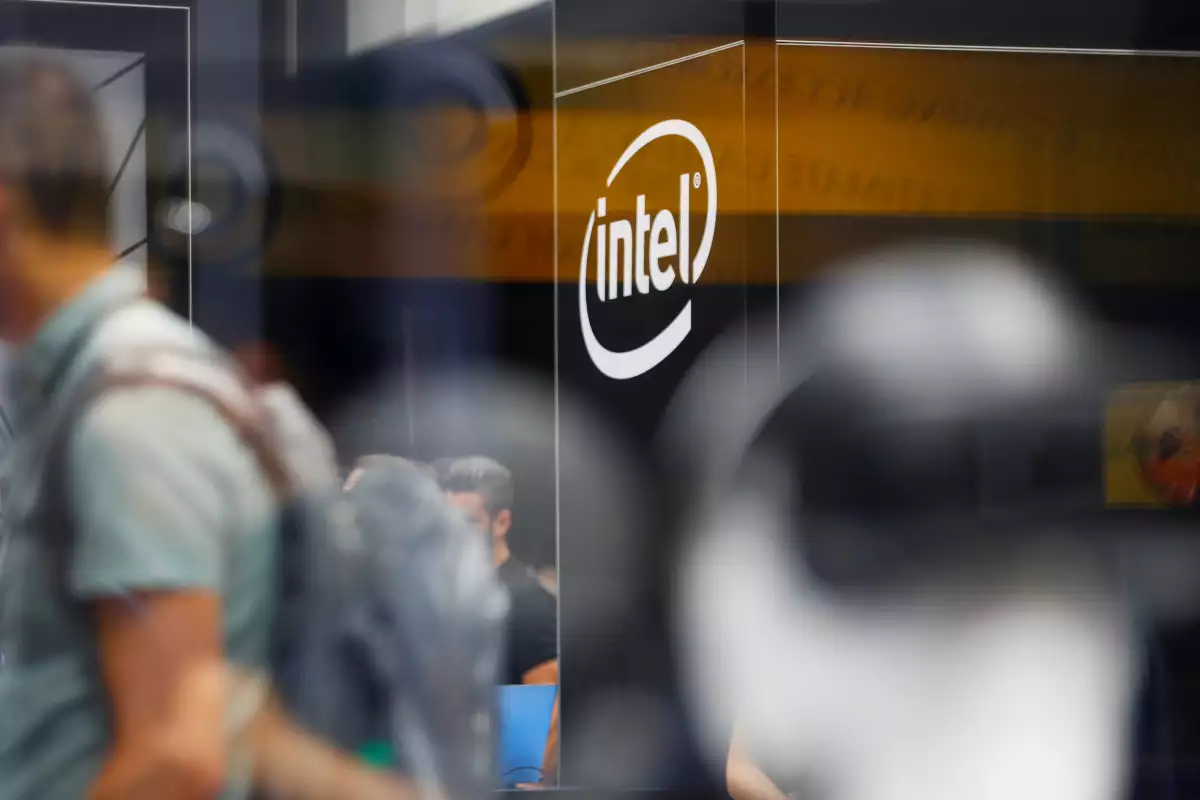
Tranding News


